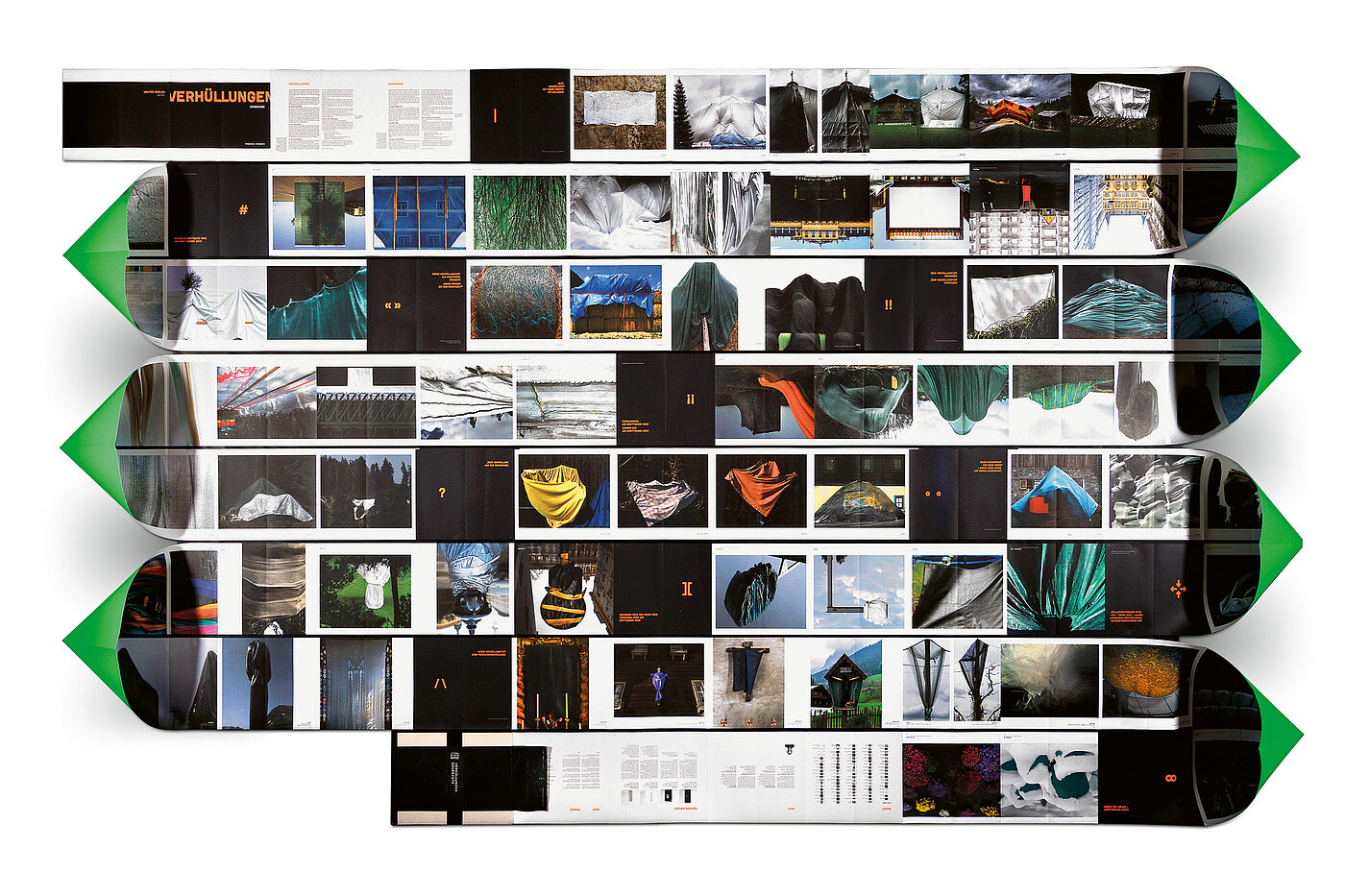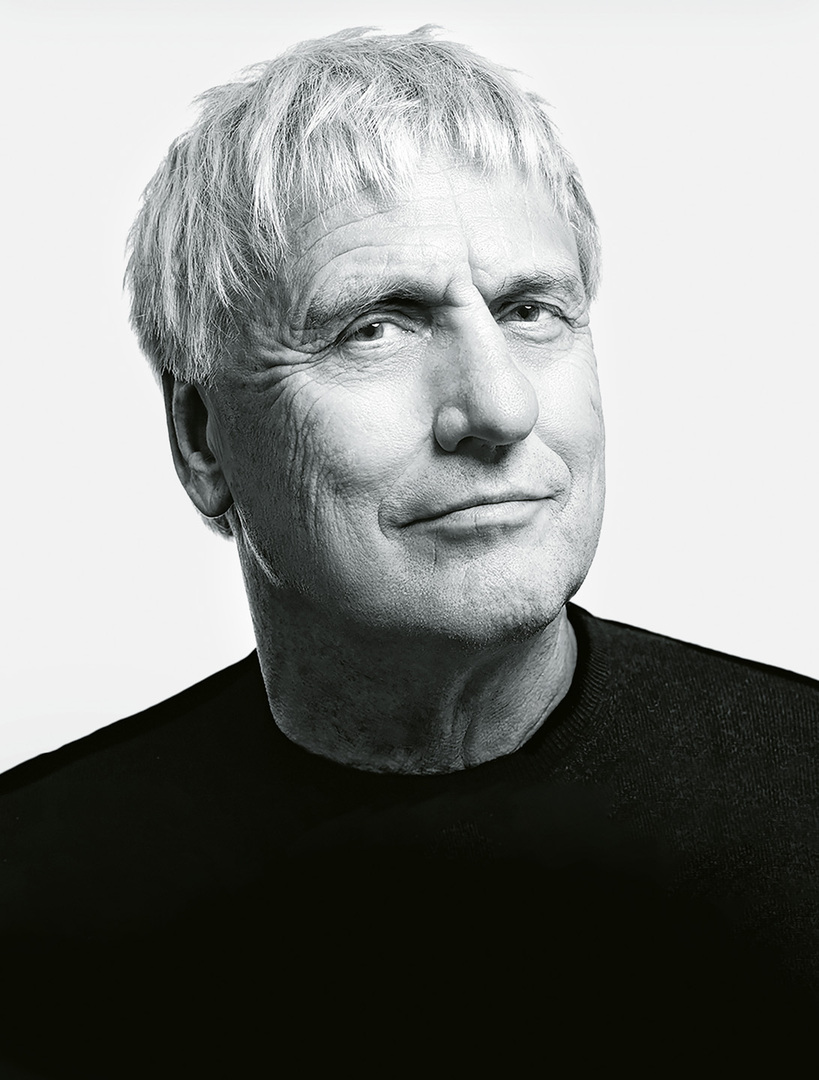
Walter Oczlon studied photography and commercial art at the Higher Federal Institution for Graphic Education and Research in Vienna and attended the master class for photography. This may have laid the foundation for his professional career – but the driving force is pure passion. Since 1979, Walter Oczlon has been running his own studio in St. Johann and Salzburg – a successful enterprise that now gives him the freedom to realise long-cherished projects. These are quite often found between two book covers, though of course not in any arbitrary form: Walter Oczlon is a perfectionist with a passion for the art of book design, for materiality and for craftsmanship.
Hence, “Verhüllungen” (Coverings) is not literature for fast consumption, but instead wants to be discovered page by page. After all, it is a 31-metre-long accordion fold book, for which he captured coverings of all kinds in public spaces with his camera. “Photography is my joy. Bookmaking is my passion,” says Walter Oczlon, and he is equally enthusiastic about the collaboration with the bookbinder, who had to be extremely meticulous and ultimately bind the books by hand. The result is an impressive work in terms of design and printing that proves how touching the analogue can be, especially in digital times. It is timeless and outlasts any kind of covering.
Interview with Atelier Walter Oczlon
Red Dot: Over what period of time were the photographs for “Verhüllungen” taken?
Atelier Walter Oczlon: Most of them were taken within a three-year period. In the beginning, I had no idea that there would be so many new things to see and discover with this theme.
Did you have a book project in mind from the outset?
Yes! Step by step, motif by motif, I began to engage more intensively with the project conceptually and photographically, while at the same time working out the book concept. My goal was to give the photographic theme an appropriate framework. By presenting the pictures in a long accordion fold, the book itself became an object of concealment – as soon as it is unfolded, it transforms into a wall-filling exhibit.
What criteria did you use to make your selection from the abundance of photographs?
In principle, for me the selection and thus also the deselection of my own pictures is a highly emotional, non-objectifiable and almost painful process. Since I always considered the accordion fold as an overall picture, the selection and sequence of images was strongly influenced by the interplay of the motifs. I made the selection easier for myself by pinning the pictures all around the walls or laying out the printed paper strips on the floor.
In the end, you created an accordion fold that is 31 metres long. Were you aware that this was going to be bookbinding madness?
No and yes. My first self-folded dummies were very promising. But they were only three metres long. As the length increased, so did the challenge. It was completely new territory for all of us – the printer, the bookbinder and me – and there were no reference objects. Therefore, it became a long road with numerous print mock-ups on original paper and discussions in the tenth of a millimetre range. In the end, the master bookbinder glued 39 precisely folded and creased printed sheets together by hand to make this accordion fold book – thanks go to him!
The accordion fold was elaborately printed in special colours, and the choice of paper was also made with care. How important is materiality to you?
Paper is look, feel and smell! I think my love of materiality is evident in this book. Moreover, “Verhüllungen” could only be realised in analogue form – which is also true for many of my other projects. It’s just nice that there is also a tactile print world next to a digital world!

